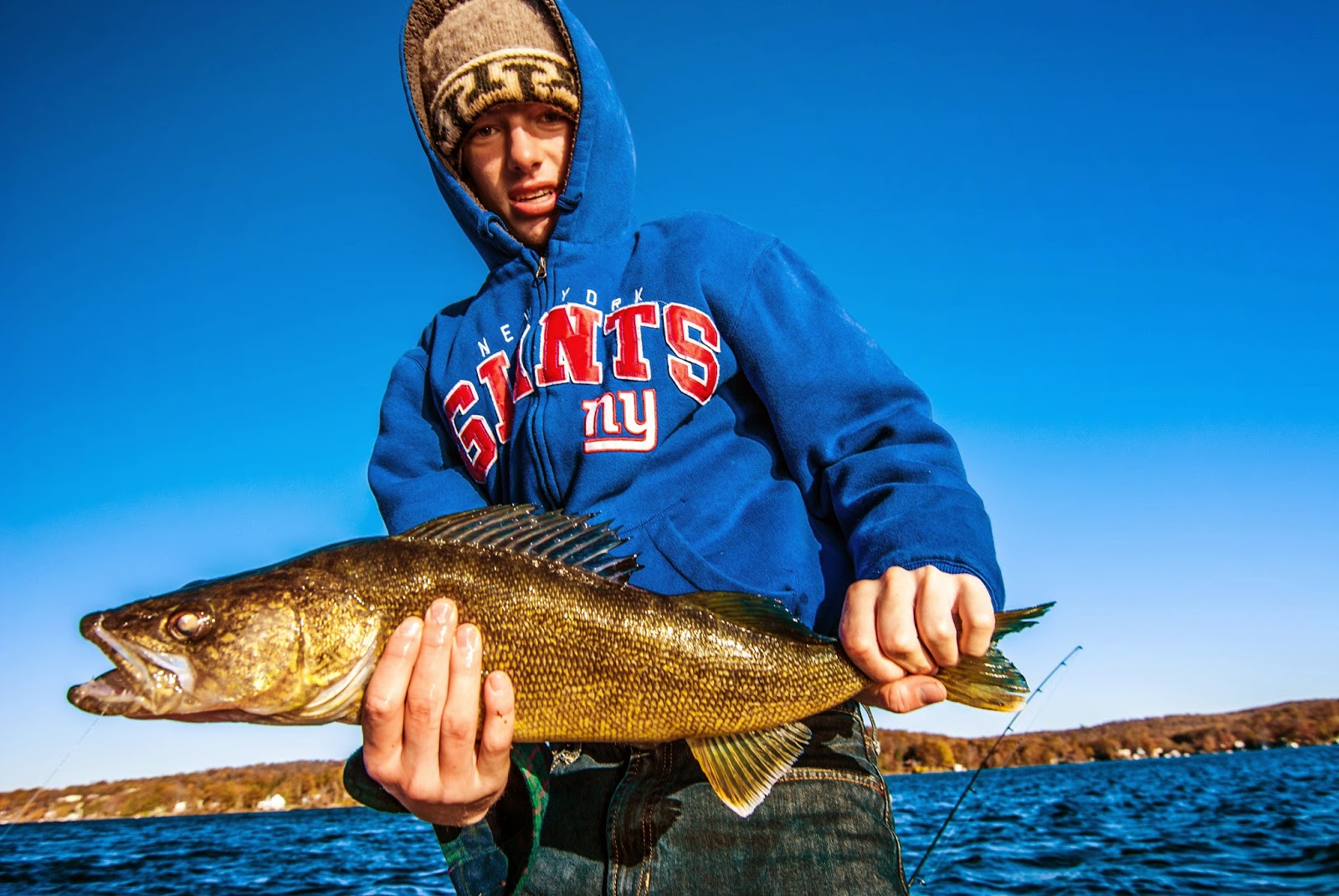“Sounds like Christmas bells!”
Marty’s fish finder alarm sounded constantly, a school of hybrid striped bass right under his
boat 29 feet down.
Nothing comes to mind to signify fall fishing so much as the memory of Joe Landolfi’s astonishment. Last October we witnessed our fellow Knee Deep Club member catching hybrids one after another on Lake Hopatcong. They stayed put for three or four hours.
By late September, all the gamefish
in Lake Hopatcong and elsewhere begin to feed especially on forage fish as the
smorgasbord of summer insects and other creatures begins to decline. But
there’s more to the story than what finned forage is available to predators.
Fish don’t fatten for winter. Cold blooded, they don’t hibernate—metabolism determines feeding behavior.
However, every species has an optimal range of temperature response in which
they feed most actively and grow best. Fall feeding is all about that optimal growth,
the unrelenting drive to more life and power.
It may seem counterintuitive that fish come alive in chillier water. The colder the water, the more metabolism slows. But temperatures above optimal ranges condition fish to feed by the conservative strategy of reducing activity to save those calories that burn faster. Insects are an easy meal, rather than, for example, a smallmouth bass burning energy to pursue an alewife herring. Even largemouth bass may feed on insects alighting on the surface, and they certainly leap for damselflies.
It may seem counterintuitive that fish come alive in chillier water. The colder the water, the more metabolism slows. But temperatures above optimal ranges condition fish to feed by the conservative strategy of reducing activity to save those calories that burn faster. Insects are an easy meal, rather than, for example, a smallmouth bass burning energy to pursue an alewife herring. Even largemouth bass may feed on insects alighting on the surface, and they certainly leap for damselflies.
With temperatures optimal September
through November depending on the species—walleye and hybrid striped bass
especially thrive in colder water—gamefish give chase. Fishing with Joe last
October, the action never ceased all day long. The hybrids and walleye feed on
Omega 3 fatty acid rich alewives with a drive to live and grow awesome to
contemplate for its ferocity.
On the Delaware River, shad fry begin
to come downriver in late September, headed for the Atlantic. Smallmouth bass
will on occasion school up and herd these schools of Omega 3 forage, blitzing
by attack formations like cocktail bluefish at the mouth of a
coastal inlet. Walleye in the river busily feed on the same forage beneath the
surface, as do young striped bass hatched as far north as Barryville, New York and possibly further.
Even channel catfish get in on some of this action, especially on whatever is
wounded by schools of smallmouth bass, which falls or flutters to bottom.
Farm pond largemouth bass now go
after bluegills any time during the day by sudden, swooping ambushes with
gaping mouths open, water rushing past gill plates. The bluegills don’t swim
passively along with the predator bass as they typically do during summer
afternoons. I once fished in a heavy rainstorm with early October temperatures
in the mid 70’s. Water temperatures warmed from about 68 degrees, and dozens of
bass as large as four pounds struck, some of them leaping two feet out of the
water to come down upon and engulf the spinnerbaits I buzzed, retrieving the
lures just fast enough with rod held at 10:00 o’clock position to create a wake
across rain-studded surface. I’ve never seen largemouth bass in such a manic
state since, but have found that a warm rain any time from late September
through October, so long as water temperatures warm, is a good time to fish.
Pickerel feed primarily on fish year
round, but fall is probably the best time to catch a big one, as they too
experience optimal feeding conditions. During my teens, the Delaware and
Raritan Canal had sand bars at the bridge over Quaker Bridge Road, Lawrence
Township. By October, silver shiners schooled on top of the bars in a foot or
two of water. Pickerel grouped around, and on occasion could be seen rocketing
up out of the dark depths of four to six feet, snatching a shiner, and diving
back down. During the 1980’s, the canal was drained and dredged. All the bars
are gone and haven’t returned, but pickerel present in the canal today and
elsewhere are emboldened and quite gullible for a live shiner, in-line spinner,
or Rapala plug.
The feel of a chilly, gray, fall day
with a strong breeze is like the mood of walleye and other gamefish—harshly
active and making their presence felt. Winter weather freezes the water and,
comparatively, the angling action. But until it really gets cold, October and
November’s subtle beauty, instead of feeling desolate and barren, invigorates
and enlivens.

No comments:
Post a Comment
Comments Encouraged and Answered